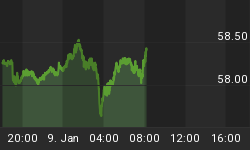For many months, the world’s largest economies, the U.S. and China, have been at each other’s throats with accusations and counter-accusations of unfair trade policies and practices. The verbal sparring finally culminated in a full-blown trade conflict on July 6 after Washington slapped $34 billion in tariffs on Chinese exports, with Beijing immediately returning fire by imposing a similar number of tariffs on U.S. imports.
Media paints a doom-and-gloom picture, with the South China Morning Post even making a morbid reference to a Third World War. But while all the talk in the U.S. is about how this may backfire on the American economy, less attention is being paid to the likely outcome of major pain for countries further down the totem pole, mostly in Europe and Asia.
Economists at Pictet Asset Management, as cited by Reuters, have come up with a model that rates which countries are likely to suffer most from the fallout. Countries are ranked by their degree of integration into the global value chain, with those that supply raw materials to other countries being at the highest risk.
Here are 10 countries that are likely to feel the most heat from the ongoing Sino-US trade war:
#10 Ireland: 59.2% (global value participation rate as share of total exports)
Ireland is dominated by many high-tech and banking services not to mention that it’s home to Google’s HQ in Europe. The country ranks high on foreign direct investments making it highly vulnerable to rumblings in the global economy.
#9 Iceland: 59.3%
Like many countries on this list, Iceland is a relatively small one that’s sensitive to market volatility. Some of its key industries that could get hurt by the fallout include aluminum smelting, fish processing and tourism. Related: Gold And Silver Struggle As Sentiment Shifts
Most of Ireland’s exports find their way into the U.S., the EU and Japan.
#8 Malaysia: 60.4%
Malaysia is China’s third-largest trading partner, thus making it susceptible to any trade instabilities on the mainland. Some of its top industries include rubber, tin, palm oil and finance, which it exports to the Islamic world.
#7 Singapore: 61.6%
Singapore is a highly developed free market economy that’s regarded as one of the most open in the world. Global exports include electronics, chemicals and financial services. Further, the country has signed over $100 billion in annual bilateral trade agreements with China.
#6 South Korea: 62.1%
Known as one of the world’s most technologically advanced economies and home to global giants such as Samsung, SK Hynix and Hyundai Motors, South Korea is a major exporter of cars, steel, electrical machinery and ships to China, the U.S. and Singapore.
#5 Czech Republic: 64.7%
The country has a strong focus on high-tech engineering with strong global ties. Its main trading partners include Germany and the EU, which also makes it vulnerable to the bloc’s ongoing trading spats with the U.S.
#4 Hungary: 65.1%
This Central European nation has a thriving export-oriented market economy that is highly dependent on foreign trade. Key exports include autos, electronics, agriculture, chemicals and IT services.
#3 Slovak Republic: 67.3%
Slovakia’s key strength iss heavy industries as well as services and agricultural products.
Related: Beware Of These 3 Bitcoin Scams
The country’s foreign trade sector has lately been growing at a rapid clip, but now could be threatened by the escalating conflicts.
#2 Taiwan: 67.6%
Located off the coast of China, Taiwan’s is a technology-intensive economy with powerful global connections. Major exports include semiconductors, electrical machinery, computers and plastics.
#1 Luxembourg: 70.8%
Most will be surprised to see Luxembourg topping this list. But it supports the world’s second highest per capita GDP and is highly dependent on trade as an outlet for its thriving steel, information services and banking industries.
By Tom Kool for Safehaven.com
More Top Reads From Safehaven.com:

















